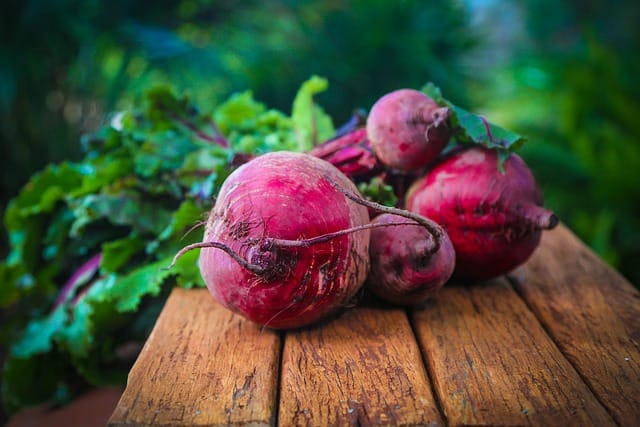How to grow Beetroots
Beetroots, also known as beets, are nutritious and vibrant root vegetables that are easy to grow in home gardens

In this article:
Introduction
Beetroots, also known as beets, are nutritious and vibrant root vegetables that are easy to grow in home gardens. They are packed with essential vitamins, minerals, and antioxidants, making them a healthy addition to any diet. In this article, we will guide you through the process of growing beetroots from seed to harvest, and provide you with helpful tips along the way.
Choosing the Right Beetroot Variety
Before you start planting beetroots, it is important to choose the right variety that suits your climate and taste preferences. Some popular beetroot varieties include 'Detroit Dark Red', 'Chioggia', 'Bull's Blood', and 'Golden'. Consider factors such as size, flavor, and days to maturity when selecting the variety for your garden.
Soil Preparation and Planting
Beetroots thrive in well-drained, loose, and fertile soil. Start by preparing the soil by removing any weeds and debris. Take some time to enrich the soil with organic matter such as compost or well-rotted manure. This will provide the plants with the necessary nutrients for healthy growth. Sow the beetroot seeds directly into the prepared soil, ensuring they are spaced at least 1 inch apart and ½ inch deep. Water the area thoroughly after planting.
Watering and Fertilizing
Beetroots require consistent moisture to grow and develop properly. Keep the soil evenly moist by providing regular waterings, especially during dry spells. Avoid overwatering, as excessively wet conditions can cause the roots to rot. To promote healthy growth, use a balanced fertilizer every 3-4 weeks throughout the growing season.
Sunlight and Temperature Requirements
Beetroots prefer full sun exposure for at least 6-8 hours a day. They thrive in cooler weather and do not tolerate extreme heat. The ideal temperature range for growing beetroots is between 50°F and 75°F. It is important to provide adequate shade or use mulch to protect the plants during hotter periods.
Thinning and Transplanting
Once the beetroot seedlings have emerged, thin them to ensure proper spacing and adequate room for growth. Thin the plants to about 3-4 inches apart. The thinned seedlings can be gently transplanted to another area of the garden, if desired. Be careful when handling the seedlings to avoid damaging the delicate roots.
Weed Control and Mulching
To keep your beetroot patch weed-free, regularly inspect the area and remove any weeds by hand. Apply a layer of organic mulch around the plants to suppress weed growth and retain soil moisture. Mulching also helps to regulate soil temperature and prevent erosion.
Pests and Diseases
Beetroots are generally resistant to most pests and diseases, but it's important to stay vigilant. Common pests that can affect beetroots include aphids, leafminers, and nematodes. Monitor your plants regularly and take appropriate preventive measures, such as using organic insecticides or employing companion planting techniques to deter pests.
Harvesting and Storage
Beetroots are usually ready for harvest within 55-70 days, depending on the variety. Harvesting can begin when the roots are around 1-3 inches in diameter, or when they have reached the desired size. Gently pull out the beetroots from the soil, being careful not to damage the tops. Trim off the excess foliage, leaving about an inch of the stem. Beetroots can be stored in a cool, dark place for several weeks.
Popular Beetroot Recipes
Beetroots are not only nutritious but also incredibly versatile in the kitchen. Here are a few popular beetroot recipes to try:
- Roasted Beetroot Salad
- Beetroot Hummus
- Beetroot Soup
- Pickled Beetroots
- Beetroot and Goat Cheese Tart
Conclusion and Final Tips
Growing beetroots can be a rewarding experience, especially when you get to enjoy the fresh and vibrant harvest. By following the steps outlined in this guide, you can cultivate healthy beetroots that will enhance your meals and provide numerous health benefits. Remember to choose the right variety, prepare the soil properly, provide adequate water and sunlight, and take necessary steps to prevent pests and diseases. With a little bit of care and patience, you'll be enjoying your own homegrown beetroots in no time!
